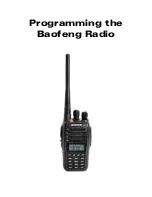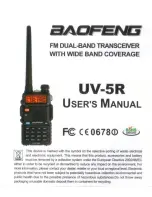
environmentally sealed enclosure. Its mounting plate has keyholes for securing the TX325 to the
backplate of a Campbell Scientific enclosure. Most GOES systems are powered by a battery
charged by a solar panel. The solar panel must have a clear view of the southern sky. Pay special
attention to winter sun angles.
7.2 LED function
A green Status LED and a red Failsafe LED indicate the state of the TX325 transmitter by using
various blink patterns.
(p. 12) and
(p. 12) provide the blink patterns for the
green Status and red Failsafe LEDs, respectively.
Table 7-1: Green LED Status indicator blink patterns
Blink pattern
Indicates
At power up, blinks on and off
two times.
Normal software is running.
RS-232 control interfaces enabled.
Power-up initialization complete and ready to receive
commands.
At power up, blinks on and off
three times.
Bootloader software is running.
Ready to load new operating system.
On continuously.
Transmitter failed to start up normally after power up. Turn
the transmitter off and on to reboot.
Table 7-2: Red LED Failsafe indicator blink patterns
Blink pattern
Indicates
Blinks on and off four times per
second.
A transmission is in progress.
Blinks on and off two times per
second for 30 s.
The post-transmit interval is in progress. The transmitter
enters this state after its RF output is turned off either by a
Reset command or by the normal completion of a data
message transmission. The radio needs to wait 30 seconds
before making another transmission to keep it from going
into Failsafe mode.
On continuously.
TX325 is in the Failsafe mode. To clear a Failsafe mode, push
the Reset button (
(p. 20)). A power cycle will NOT
clear the Failsafe mode.
TX325 Satellite Transmitter for GOES V2
12
















































